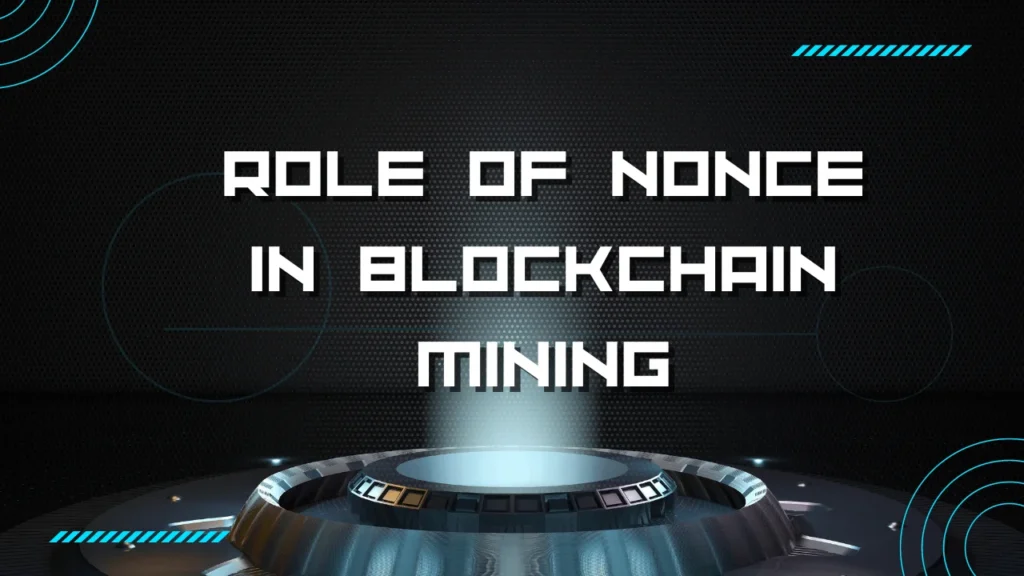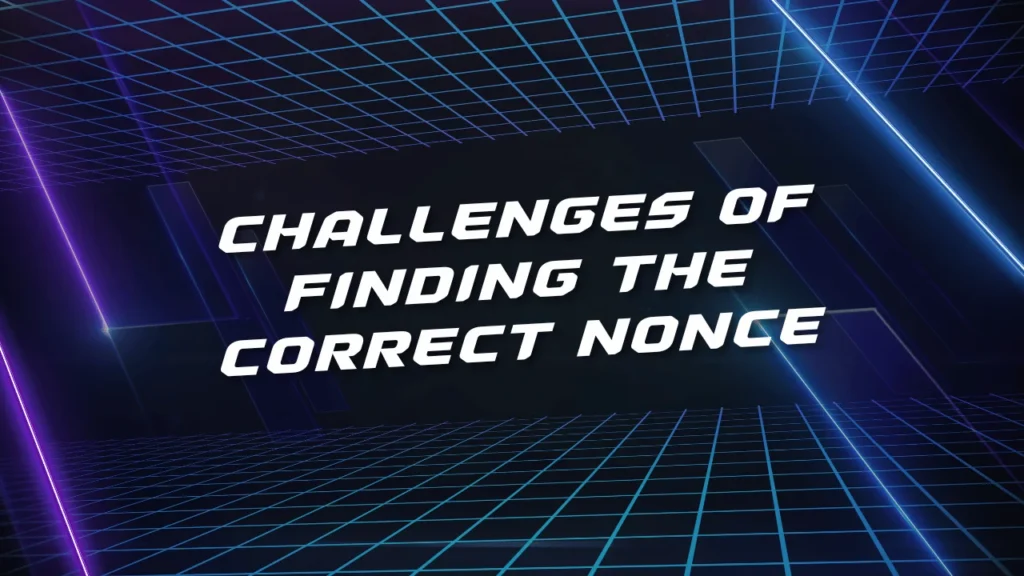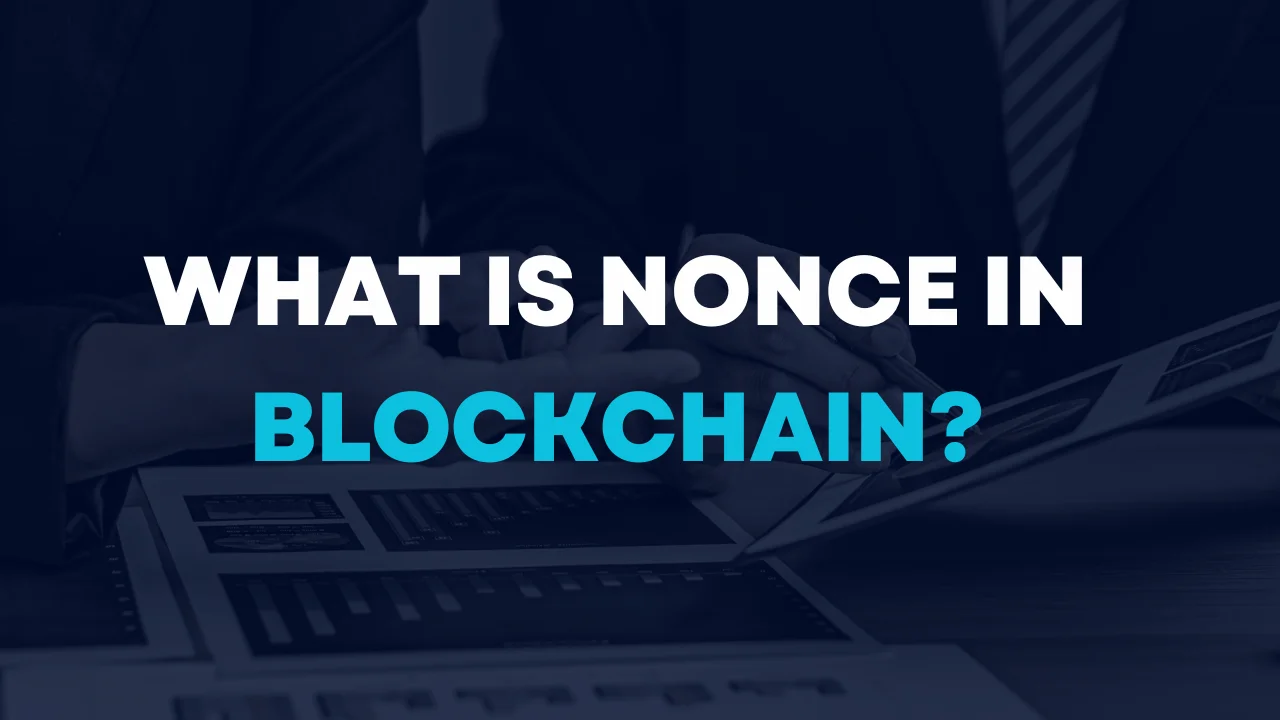In the dynamic landscape of the blockchain industry, where terms like “nonce” can often confound newcomers and veterans alike, understanding its significance is pivotal. The nonce serves as a crucial element in maintaining the integrity and security of blockchain networks. It’s not merely a random number but a meticulously calculated value that validates blocks in the chain. What is Nonce in Blockchain? As Bitcoin ATMs in India gain popularity, grasping concepts like nonce becomes increasingly relevant, as it underpins the very fabric of transactions and security within these decentralized systems. This article aims to demystify the nonce, shedding light on its intricacies and implications, to foster a deeper comprehension among enthusiasts and professionals navigating the complexities of blockchain technology.
What is the Nonce and Its Significance in Blockchain?
When mining for a blockchain, a nonce is an essential component for reaching consensus and securing the network. The cryptographic hash function that miners must solve in order to add a new block to the blockchain uses it as a variable. It stands for “number only used once.” Finding a nonce that, when hashed with the block data, produces a result that matches the network’s difficulty target is the crux of mining. This process, called proof of work, strengthens the immutability and integrity of the blockchain and requires a lot of computational power. The nonce is crucial to the security and reliability of the blockchain because it makes it very difficult and expensive to change previous transactions, which strengthens the system’s defence against attacks and unauthorised changes.
Role of Nonce in Blockchain Mining

Deciphering the Mining Puzzle
To verify and add a new block to the blockchain, miners must solve a cryptographic puzzle, and the nonce is the key to this puzzle. By combining the proposed block’s data with a nonce and running it through a hash function, miners strive to produce a hash value that either matches or falls short of a predefined target. In addition to gauging computational power, this process is an essential component of the network’s security architecture.
Securing the Blockchain Network
Ensuring that only individuals who have invested substantial computational resources are allowed to contribute to the blockchain, the process of determining the correct nonce serves as a gatekeeper. By making it economically impossible for malicious actors to manipulate the blockchain, this contributes to the network’s security. This is because it requires immense energy and financial resources for them to outcompete honest miners in computational power, which is no small feat.
Adjusting Mining Difficulty
To keep the time needed to mine a block constant, regardless of changes in the network’s total computational power, the blockchain protocol dynamically adjusts the difficulty of finding a nonce. This change is essential to keep the blockchain’s regular block addition pace, which impacts network stability and the time it takes to process transactions.
Proof of Work and Network Consensus
In order for decentralised blockchain networks to reach a consensus on the ledger’s state, the proof of work consensus mechanism relies on the nonce, which must be found. Blockchains prevent a central authority from controlling or manipulating the ledger without the required computational contributions by requiring proof of computational work, which is demonstrated by the successful discovery of a nonce.
Network Integrity and Trust
The nonce plays a crucial part in mining and helps guarantee the blockchain’s integrity and trustworthiness. The nonce mechanism promotes a trustworthy digital ledger by preventing double spending and other types of attacks by making it computationally difficult to add blocks, which in turn discourages fraudulent activities.
Impact of Nonce on Blockchain Network Security and Integrity
Resistance to Blockchain Attacks
The computational effort needed to solve the cryptographic puzzle by the nonce makes it a strong defence against the 51% attack and other blockchain attacks. An entity tries to manipulate the blockchain by controlling the majority of the network’s mining power in such an attack. Finding the right nonce is expensive and difficult, which discourages such threats and makes the network more resilient.
Preventing Unauthorized Modifications
The nonce and its accompanying proof-of-work mechanism ensure that all blockchain transactions, both recent and historical, are uncompromised. It becomes exponentially more difficult to change any previously added block because doing so would require recalculating the nonces for all blocks after it. This guarantees that a transaction is practically immutable once it is recorded on the blockchain.
Blockchain Immutability
Inherent to the idea of blockchain immutability is the mining process and the nonce. To keep all historical data intact, blockchains enforce a certain hash value for each block, which is affected by the nonce. The immutability of the blockchain ensures that data cannot be changed after the fact without a detectable computational effort, which is crucial for the blockchain’s trustworthiness.
Network Trustworthiness
The nonce plays a significant role in upholding the trustworthiness of the cryptocurrency network. It achieves this by establishing a trustworthy and verifiable method for adding blocks to the blockchain, which gives users faith in the integrity and safety of the system.
Challenges of Finding the Correct Nonce

Computational Intensity and Energy Consumption
Finding the right nonce is a time-consuming and energy-intensive computational process. In their pursuit of the nonce that satisfies the blockchain’s difficulty criterion, miners employ specialised hardware to execute millions of calculations per second. Even though it secures the blockchain, this process uses a lot of energy, which is bad for the environment, particularly in networks that use the proof-of-work consensus method.
Increasing Difficulty Levels
To ensure a constant block time, the blockchain protocol dynamically raises the difficulty of the cryptographic puzzle in response to growing computational power and the number of miners on the network. Because of the increasing difficulty, miners are putting more and more energy and computational resources into finding the correct nonce by doing an increasing number of calculations.
Race for Faster Hardware
A technological arms race in mining has ensued as a result of the difficulty of locating the nonce. More efficient hardware that uses less power while still doing more calculations per second is something that miners are always on the lookout for. While innovation in mining technology is essential for maintaining competitiveness, it has unintended consequences, such as hastening the equipment’s obsolescence and bringing up concerns about electronic waste and sustainability.
Impact of Nonce on Transaction Speed and Scalability
The capacity and speed of the blockchain to process transactions are directly affected by the process of finding a nonce. The inherent conflict between network scalability and security becomes clear as difficulty levels are adjusted to keep block time constant. Blockchain developers are constantly faced with the challenge of striking a balance between efficient transaction processing and robust security.
Innovations in Nonce Generation and Blockchain Efficiency
Alternative Consensus Mechanisms
Alternative consensus mechanisms, such as proof of stake (PoS), are being investigated by the industry as a solution to the problems caused by the nonce in proof of work blockchains. PoS does not necessitate mining or the generation of nonces. These measures are put in place to make blockchain operations more scalable and less harmful to the environment, all while keeping security intact.
Advancements in Cryptographic Techniques
Investigations into improved algorithms for nonce generation and novel cryptographic methods are continuing. If these innovations pan out, finding the nonce will become less of a computational burden, which will improve the efficiency and longevity of blockchain networks.
Optimization of Mining Algorithms
Optimising mining algorithms is an ongoing effort by developers to increase the efficiency and speed of nonce discovery. By making these adjustments, mining operations can use less energy and mining hardware can last longer, making the blockchain ecosystem more sustainable.
Future of Nonce in Blockchain
With the advent of more efficient consensus mechanisms and other advancements in blockchain technology, the nonce’s function may change considerably. Nevertheless, its primary objective of guaranteeing the safety and authenticity of blockchain networks has not diminished. Future nonce generation will be shaped by innovations in hardware, algorithms, and consensus models that strive for a balance between efficiency, security, and environmental sustainability.
FAQs
What does “nonce” stand for in blockchain technology?
The “number only used once” (or “once”) is an essential part of the mining process that adds blocks to the blockchain.
Why is finding the correct nonce important?
If you want to validate and add a new block to the blockchain, guarantee network security, and keep transaction data intact, you must find the right nonce.
How does the nonce affect blockchain security?
The nonce contributes to blockchain security by making it computationally difficult and costly to alter past transactions, thus deterring attacks and unauthorized modifications.
Can the difficulty of finding a nonce change?
To keep the blockchain network stable and scalable, the difficulty of finding the right nonce changes dynamically to keep block times consistent.
Are there alternatives to the nonce-based proof of work mechanism?
Sure, there are other ways to reach consensus that don’t involve mining or nonce generation. One such method is proof of stake (PoS), which could be more scalable and energy efficient.
Also Read: Indian Government Blockchain Initiatives
Conclusion
The nonce is an essential component of blockchain technology that ensures the validity of transactions, the safety of networks, and the mining process. What is Nonce in Blockchain? An essential part of the proof-of-work consensus mechanism, finding the correct nonce is not without its difficulties, such as high computational demands and environmental concerns. Better, more long-lasting blockchain operations are on the horizon thanks to developments in hardware, cryptographic methods, and alternate consensus procedures. No matter what happens to the blockchain landscape in the future, the nonce will still be an important part of it, even though its function and execution may change to accommodate new technological paradigms.

Timothy Jensen is an expert writer who specializes in the world of cryptocurrencies, including blockchain technology and Bitcoin. He has a passion for explaining complex topics in an easy-to-understand way. Timothy’s work aims to demystify the digital currency landscape for his readers.

